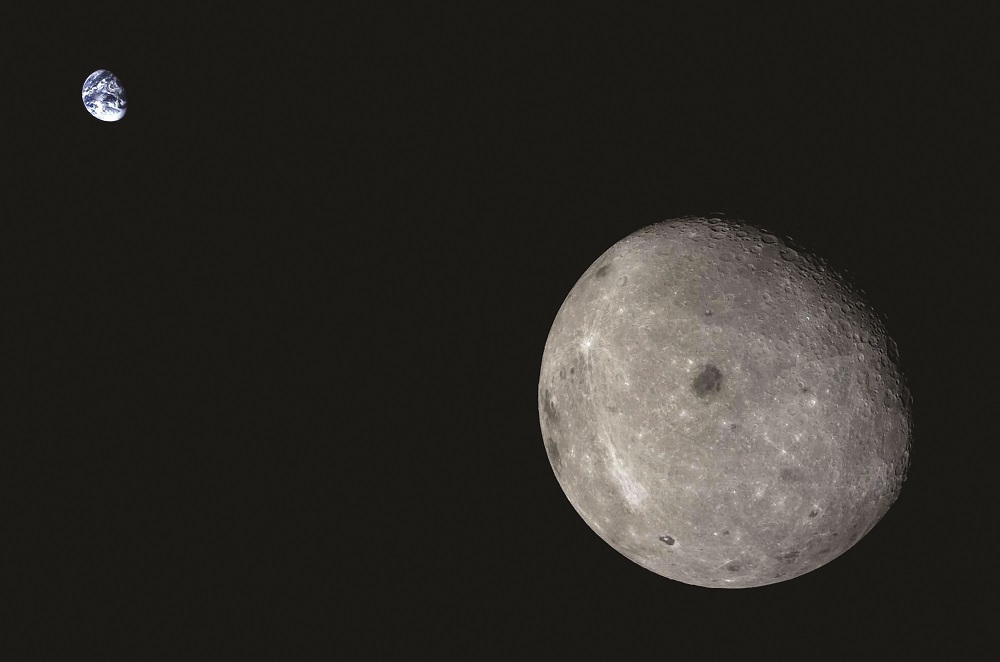HELSINKI — Two Chinese spacecraft appear to have successfully reached their intended lunar orbits despite an initial launch issue that left them stranded in low Earth orbit.
A slide attributed to the Technology and Engineering Center for Space Utilization (CSU) under the Chinese Academy of Sciences (CAS), recently posted on the Tieba Baidu social networking platform, indicates that the DRO-A and DRO-B spacecraft have successfully entered distant retrograde orbits around the Moon. The DRO missions are part of a pilot project run by CAS.
“[DRO] Satellites A, B, and L have been powered on and are operating stably in orbit, with their working status normal,” the slide reads.
The mission is not critical to China’s immediate lunar plans. However, this successful recovery, if confirmed, would bolster the country’s deep space capabilities and demonstrate resilience in overcoming in-orbit challenges. China has yet to provide an update on the mission following a short report of a launch anomaly back in March.
The DRO satellites are technology and orbit-testing spacecraft that could play a role in China’s wider lunar ambitions. These include establishing lunar navigation and communications infrastructure to support lunar exploration.
Rescue operations
The DRO-A and B satellites launched March 13, intended for distant retrograde orbit. DROs are stable orbits in which spacecraft orbit the moon in an opposite direction to the moon’s rotation, and at relatively great distances. The pair were understood to be intended to communicate with another satellite, named DRO-L, in low Earth orbit (LEO). DRO-L launched in February. The three-satellite system is designed to test high-precision relative navigation technology.
However, DRO-A and B were not inserted accurately into their designated orbit by the mission’s Long March 2C rocket, Xinhua reported following launch. This was due to an anomaly experienced by the Yuanzheng-1S upper stage.
China has yet to provide any formal update on the mission since that terse statement. However U.S. space situational awareness has provided insights.
Data from the U.S. Space Force’s 18th Space Defense Squadron (18 SDS) initially confirmed an object associated with the launch in low Earth orbit (LEO). Later data indicated that operators were attempting to save the mission, using spacecraft propulsion to raise their orbit.
18 SDS later tracked the spacecraft in a 525 x 132,577-kilometer, highly-elliptical, high Earth orbit. It was later detected in a 971 x 225,193-km orbit on March 26.
18 SDS data for the object has not been updated since March. This however could reinforce the idea that the DRO-A and B spacecraft changed its orbit, left highly-elliptical, high Earth orbit and achieved translunar orbit. 18 SDS tracking focuses on orbits much closer to Earth. The spacecraft would likely have separated from each other at some point after entering translunar orbit.
Having missed the precisely-calculated window for TLI when the upper stage failed, a new opportunity for reaching lunar orbit would have been determined. This would be based on their new orbits, the position of the moon and other factors.
The unintended use of spacecraft propellant to raise their orbits to reach the moon will, however, impact the amount of fuel available for its planned mission duration and objectives. The slide contains a diagram including a future spacecraft in low lunar orbit. This could focus on exploring the Earth-moon orbit environment, autonomous flight, and innovative scientific experiments and technology tests.
Translunar transparency
The resuscitation of the DRO-A/B mission raises issues of openness as countries increase their interest in, and operations around, the moon.
“In my opinion there needs to be more transparency on launches beyond Earth orbit, including orbital data, consistent with the UN registration convention and UN Resolution 1721B,” Jonathan McDowell, a space activity tracker and astrophysicist, told SpaceNews.
That resolution was adopted by the UN General Assembly in 1961. It believes that United Nations should provide a focal point for international co-operation in the peaceful exploration. It calls “upon States launching objects into orbit or beyond to furnish information promptly to the Committee on the Peaceful Uses of Outer Space, through the Secretary-General, for the registration of launchings.”
Both China and the United States are leading distinct multinational efforts to establish sustainable presences on the moon. These are the International Lunar Research Station (ILRS) and Artemis program respectively.
In 2024 alone there have been five missions to the moon so far. These are the Peregrine Mission One, Intuitive Machines’ IM-1, DRO-A/B, Queqiao-2 and Chang’e-6. The latter three are all Chinese missions. The Japanese SLIM lander also set down on the moon in January. Further U.S. and Japanese commercial missions could launch before the end of the year.
“The increasing activity in deep space requires improved situational awareness and international governance,” McDowell added.
